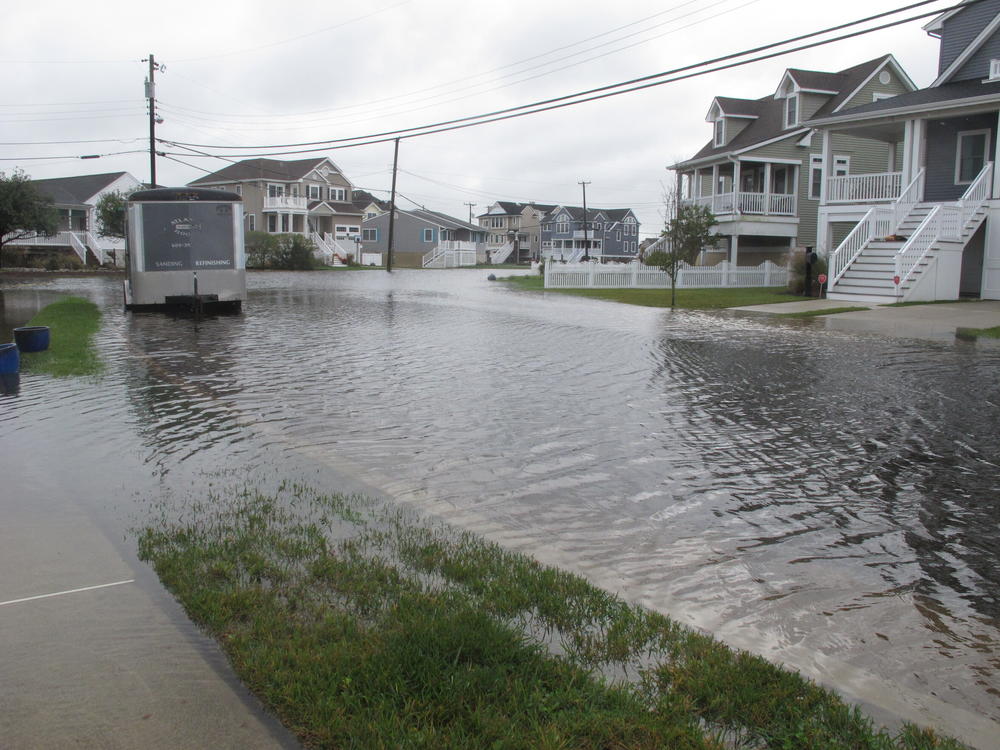Section Branding
Header Content
Humans must limit warming to avoid climate tipping points, new study finds
Primary Content
Humans must limit global warming to 1.5 degrees Celsius to avoid runaway ice melting, ocean current disruption and permanent coral reef death, according to new research by an international group of climate scientists.
The new study is the latest and most comprehensive evidence indicating that countries must enact policies to meet the temperature targets set by the 2015 Paris agreement, if humanity hopes to avoid potentially catastrophic sea level rise and other worldwide harms.
Those targets – to limit global warming to between 1.5 and 2 degrees Celsius (between 2.7 and 3.6 degrees Fahrenheit) compared to preindustrial times – are within reach if countries follow through on their current promises to cut greenhouse gas emissions. But there is basically no wiggle room, and it's still unclear if governments and corporations will cut emissions as quickly as they have promised.
The Earth has already warmed more than 1 degree Celsius (nearly 2 degrees Fahrenheit) since the late 1800s.
"This is providing some really solid scientific support for that lower, more ambitious, number from the Paris agreement," says David McKay, a climate scientist and one of the authors of the new study, which was published in the journal Science.
The new study makes it clear that every tenth of a degree of warming that is avoided will have huge, long-term benefits. For example, the enormous ice sheets in Greenland and Antarctica are already melting rapidly, adding enormous amounts of fresh water to the ocean and driving global sea level rise.
But there is a tipping point after which that melting becomes irreversible and inevitable, even if humans rein in global warming entirely. The new study estimates that, for the Greenland and West Antarctic ice sheets, that tipping point falls somewhere around 1.5 degrees Celsius of warming. The hotter the Earth gets, the more likely it is to trigger runaway ice loss. But keeping average global temperatures from rising less than 1.5 degrees Celsius reduces the risk of such loss.
If both the Greenland and West Antarctic ice sheets melted, it would lead to more than 30 feet of sea level rise, scientists estimate, although that would happen relatively slowly, over the course of at least 500 years.
But climate scientists who study the ice sheets warn that dangerous sea level rise will occur even sooner, and potentially before it's clear that ice sheets have reached a tipping point.
"Those changes are already starting to happen," says Erin Pettit, a climate scientist at Oregon State University who leads research in Antarctica, and has watched a massive glacier there disintegrate in recent years. "We could see several feet of sea level rise just in the next century," she explains. "And so many vulnerable people live on the coastlines and in those flood-prone areas.
The study also identifies two other looming climate tipping points. Between 1.5 and 2 degrees Celsius of warming, mass death of coral reefs would occur and a key ocean current in the North Atlantic ocean would cease to circulate, affecting weather in many places including Europe.
And beyond 2 degrees Celsius of warming, even more climate tipping points abound. Larger ocean currents stop circulating, the Amazon rainforest dies and permanently frozen ground thaws, releasing the potent greenhouse gas methane.
Cutting greenhouse gas emissions quickly and permanently would avoid such catastrophes. "We still have within our means the ability to stop further tipping points from happening," McKay says, "or make them less likely, by cutting emissions as rapidly as possible."
Copyright 2022 NPR. To see more, visit https://www.npr.org.

